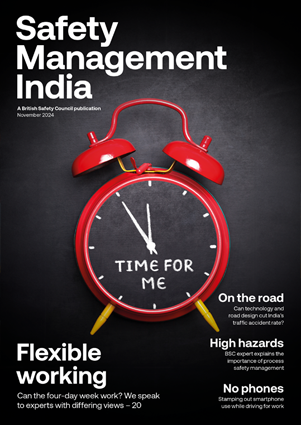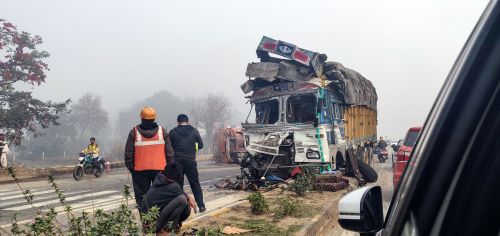It’s a simple, obvious truth: the cleaner the air we breathe, the healthier we are. Yet, most of us are inhaling pollution out in the streets as well as in the safety of our homes, offices, schools, hospitals and other buildings – without realising the damage it is causing to our health, nor that there are quick, easy solutions to clean the air and strengthen the health of our communities.
Features
The simple steps we can take to stem the hidden danger of indoor air pollution
Air pollution affects every organ in the body. It’s linked to a long list of health problems, including asthma, lung and heart disease, cancer, stroke, dementia, depression, miscarriage, infertility, low birthweight and early birth. It exacerbates existing conditions, from lung and heart disease to allergies.
 Ella Roberta Adoo-Kissi-Debrah's tragic death was caused by air pollution. Photograph: Ella Roberta Estate
Ella Roberta Adoo-Kissi-Debrah's tragic death was caused by air pollution. Photograph: Ella Roberta Estate
Outdoors, the sources of air pollution include diesel and petrol vehicles, construction sites, wood-burning and fossil fuel-fired power generation. Indoors, they include dust, dirt or gases in the building. It’s emitted from candles, from gas-fired cooking stoves, from wood-burning fireplaces, from building materials, from mould and damp, and more. And it can hang around in the air making us sicker and weaker, unless properly ventilated.
It was no coincidence that London suffered the biggest hit in the UK from the Covid-19 pandemic, with over 184,000 deaths in the first year. The health of many Londoners was already weakened by air pollution and the lack of ventilation in buildings, where we had to spend almost all of our time, made it easier for the virus to spread.
Covid brought us face to face with the consequences of poor air quality. But my campaign for a human right to breathe clean air started long before the pandemic, after I experienced first-hand the devastating impacts of air pollution on health.
My eldest daughter, Ella, passed away in 2013 at the age of nine following a harrowing battle with severe asthma, which saw her hospitalised 27 times in three years.
 Rosamund Adoo-Kissi-Debrah CBE is founder of the Ella Roberta Foundation.
Rosamund Adoo-Kissi-Debrah CBE is founder of the Ella Roberta Foundation.
In December 2020, in the midst of the pandemic, Ella became the first person in the world to have air pollution listed as a cause of death on her death certificate.
The coroner in Ella’s case made clear that air pollution from the diesel and petrol traffic on London’s South Circular Road, near our home in Lewisham, had been a significant contributor to my daughter’s illness and her final, fatal respiratory attack.
Death toll
Ella was far from alone. Worldwide, seven million premature deaths every year are linked to health impacts from air pollution, according to the World Health Organization (WHO). Around four million are from outdoor pollution, three million from indoor pollution.
Shockingly, 11 years after Ella’s death, nine out of 10 children worldwide are still breathing dirty air, according to the WHO.
In the UK, air pollution is estimated to contribute to some 43,000 deaths a year, according to Public Health England. This is costing £20 billion in health care costs.
For Ella, the killer was outdoors, on one of the UK’s busiest roads. I have worked tirelessly in the past decade to raise awareness about the health impacts of air pollution and the need to stop burning fossil fuels to protect children’s health, and to push governments around the world to adopt the WHO’s guidelines to ensure acceptable levels of air quality.
Progress is slow and bumpy, but I do see a difference – especially in the awareness of outdoor air pollution and steps to tackle it. In London, the Ultra Low Emission Zone is now in place across the entire city meaning the most polluting vehicles are off the streets.
Last year, the Clean Air (Human Rights) Bill known as Ella’s Law was introduced as a Private Member’s Bill in Parliament. If adopted, Ella’s Law would go much farther in protecting the health of the entire nation, enshrining the human right to clean air in law, and setting a clear pathway for the UK to adhere to the WHO’s guidelines for air quality. Indoors, Ella’s Law would require building operators to monitor and report on the quality of air in their buildings, and introduce steps to tackle mould in homes.
There is no doubt if the Government passed Ella’s Law that it would save lives.
The danger lurking indoors
But while awareness about outdoor air pollution is rising, we are far less aware of what we are breathing indoors.
As Chief Medical Officer Chris Whitty said in his December 2022 report on air pollution, poor indoor air quality is becoming an increasing part of the problem and needs to be prioritised.
People spend around 80 per cent of their time indoors, working, studying, relaxing, and many of those spaces are public, he noted.
Ventilation is crucial to improving indoor air quality, Whitty said, noting that it needs to be increased while minimising energy use and heat loss. We also need more research into new ways of reducing the pollution, he added.
Research by Harvard University, for instance, saw a 61 per cent improvement in cognitive function for students in a well-ventilated, clean environment.
I’m seeing anecdotal but promising evidence of this from my work rolling out filtration systems in classrooms all around London. Since starting to install these systems in school, we have heard back from schools that the pupils and teachers are experiencing fewer asthma cases and fewer absences.
The Mayor of London, Sadiq Khan, has so far committed to install filtration systems in 200 schools, but he needs to increase that. There are 1,843 schools in London, including nurseries and other childcare facilities – I’m hoping to have at least half of them covered by this time next year. And I will be calling on Manchester Mayor Andy Burnham to do the same in his city.
Ventilation in buildings can also control the temperature and humidity and reduce moisture, odours and gases. The average relative humidity in UK offices is around 38 per cent – but it should be 40-60 per cent, according to the British Council for Offices. At 35 per cent humidity, people will experience eye irritation, nasal dryness and sore throats.
More humidity, therefore, improves health and helps to stem the spread of infectious disease – as we learned during Covid.
People need to understand the easy measures they can take to reduce indoor air pollution. They need to push their local and national policymakers, their employers, their building managers, to take the necessary steps to clean the air they are breathing daily.
My family and I, for example, take significant but simple precautions indoors. We have leather sofas, because they are easier to clean and collect less dirt and dust, we have laminate floors rather than carpets, and ventilate while cooking. We don’t burn scented candles, and we keep the windows open whenever possible.
This, of course, isn’t so easy in an office building, hospital or school. That’s why we need local and national governments, and businesses, to do their part to guarantee our human right to breathe clean air – indoors and out.
Rosamund Adoo-Kissi-Debrah CBE is founder of the Ella Roberta Foundation, a WHO BreatheLife ambassador and honorary president of the wellbeing in buildings group in the Building Engineering Services Association (BESA).
To support the work of the Ella Roberta Foundation, go to:


FEATURES
Why changes to recycling legislation in England are an opportunity, not a burden
By on 12 November 2024

Road safety in India: could better road safety, vehicle technology and enforcement make driving for work safer?
By Orchie Bandyopadhyay on 10 November 2024
India has a poor road safety record, and research shows that commercial vehicles are a major contributor to the problem, with trucks estimated to be the single largest vehicle type involved in impacts leading to fatalities. We look at solutions that could make driving for work and the roads in general safer – from in-vehicle technology that warns truck drivers about unsafe behaviour to improving the design features of major highways.

